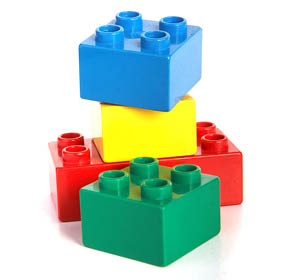
I use interlocking cubes (sometimes known as multilink cubes) in a fairly conventional way - to teach plans, elevations, isometric drawing and volume. Every mathematics department I have ever worked in has had boxes full of them and I am a firm believer that every department in the country owns a set of dice, dominoes and multilink cubes.
More recently, I have found myself using this equipment, or ‘manipulatives’, to explore prime numbers, to aid understanding when factorising algebraic statements, expanding brackets and even to simulate a space-walk experience.
I have been exploring how to integrate the use of manipulatives into more of my teaching. I find the more I use manipulatives, the more successful the results, and the more students get out of using them.
Ofsted’s 2012 ‘Made to Measure’ report states:
“A key issue for the majority of schools was to improve pupils’ understanding of mathematics by focusing more on concepts and the development of insight, and by relying less on teaching ‘rules’… pupils regularly experienced lessons where the sense behind the mathematics was not explained to them or developed collaboratively with them.”
Effective use of manipulatives to enhance student understanding can help.
The ‘Using manipulatives to enhance understanding in key stage 3 mathematics’ CPD activity, available at the National STEM Learning Centre, explores the use of manipulatives such as counters, interlocking cubes, Cuisenaire rods, tiles and multi-base blocks to enhance understanding in mathematics at key stage three and beyond.
The CPD is suitable for teachers of mathematics in secondary schools, and includes hands-on sessions exploring how a variety of mathematics equipment can be incorporated into lessons and linked to resources found on the National STEM Learning Centre’s online resource collection.

